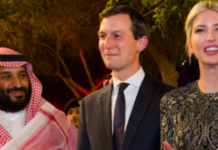Black Lives Matter (BLM) has been gaining in both public attention and scrutiny. That scrutiny recently increased with the murders of police officers in Dallas and Baton Rouge.
The most extreme scrutiny against BLM actually referred to the civil rights movement a terrorist organization.
https://twitter.com/TomsAllende/status/753031364094615552
Exploiting the tragedies in Dallas and Baton Rouge to vilify BLM is as illogical as it is wrong. The assassinations of police officers were committed by Gavin Long and Micah Johnson. Johnson did mention being upset about the treatment of African Americans by police. However, he also told negotiators he was working alone.
It is unknown if Long was inspired by Johnson’s ambush in Dallas. What is known is that Long made it clear he was not associated with any organizations.
He said,
“If anything happens with me… I just want to let y’all know, don’t affiliate me with nothing… I made my own decisions, I’m the one who gotta listen to the judgement.“
Long also encouraged violence on social media and criticized BLM protestors saying,
“If y’all want to keep protesting, do that… but for the serious ones, the real ones, the alpha ones, we know what it’s going to take.”
Long and Johnson might share anger about the treatment of African Americans at the hands of the police. However, their horrific actions are in no way representative of the BLM civil rights movement.
Alicia Garza, co-founder of BLM told the New Yorker,
“What I’m seeing and what I’m hearing is people actually rallying around Black Lives Matter at the same time that people are condemning the murders that happened in Dallas. At the same time that we can grieve the senseless loss of life of five police officers, we are also grieving the senseless loss of life that occurred at the hands of the police. Those things can coexist…”
People have blamed Black Lives Matter when protests have led to rioting.
OK I heard yesterday that Black lives Matter leader plotted to incite a nationwide riot to keep Obama in office. I need more info on this.
— Vic the Slick G (@victheslickg) June 15, 2016
We can ask organizations and leaders to set an example. We can ask them to talk about the actions they want to see. However, we can’t hold them accountable for the actions of individuals. Peaceful protests are the ideal, but when riots do occur don’t be quick to point a finger.
Marcus Bell, a PhD candidate at Syracuse University and Junior research fellow at Yale University wrote,
“To all you arm chair analysts who demean BLM, particularly relative to venerable example set by MLK, please keep in mind that MLK was repeatedly assaulted by protestors of his movement, jailed on numerous occasions, illegally wire tapped by the FBI, called the “most dangerous man in America” by J. Edgar Hoover, and ultimately assassinated by a white supremacist. Long story short, America didn’t care for his brand of activism either.”
Many people have questioned the goals and accomplishments of the Black Lives Matter movement.
https://twitter.com/TheRealSteveK/status/752572189770211331
One can only assume Steve Konarski means BLM is making people aware of the prevalence of segregation.
Black Lives Matter has accomplished much more than just empowering people to take a stand for justice. They have engaged in productive dialogues with the president, community leaders, and the police. In addition, Black Lives Matter recently released a comprehensive list of ten research based policing reforms. The suggestions are called campaign zero.
1. End Broken Windows Policing
Broken Windows Theory is based on the belief that people will treat their surroundings better or worse based on their appeared value. Therefor, a crime is less likely to occur in a neighborhood free from things like litter and graffiti.
In order to achieve the appearance of value, police enforces quality of life offenses. Quality of life offenses refers to crimes with no direct victims such as jaywalking or loitering. While quality of life offenses are not concerns for public safety, their enforcement might be.
The Atlantic reported, Yale law professor Stephen L. Carter’s position that enforcing the law is inherently violent.
“This is by no means an argument against having laws. It is an argument for a degree of humility as we choose which of the many things we may not like to make illegal.”
He goes on to explain how enforcing the law can call for violence,
“Is this an exaggeration? Ask the family of Eric Garner, who died as a result of a decision to crack down on the sale of untaxed cigarettes.”
In addition to decriminalizing minor offenses, campaign zero also calls to end profiling and “Stop-and-Frisk”. As suggested in the Village Voice, broken windows theory can be in conflict with Community Policing. Community Policing is the strategy that believes in forming ties and building relationships between residents and police.
Repeated interactions with residents is a goal of Community Policing. However, to build ties some of those interactions need to remain positive.
2. Community Oversight
This policy would establish a civilian office to oversee police complaints. The police department would retain the right to discipline or dismiss officers. The Civilian Complaints Office would be the ones to investigate complaints. Consider that within some police departments, officers are transferred when they are given a promotion. It isn’t seen as realistic for officers to discipline their friends or co-workers. If police departments have imposed such policies on themselves, it stands to reason officers should not be investigating each other on cases of misconduct.
3. Limit Use Of Force
This policy would eliminate high speed chases when a violent felony is not past or eminent. Consider the danger to police, suspect, and bystanders that high speed chases cause. Also, consider the cost and use of resources. Recently, in New York, a helicopter unit chased a 16 year old who hopped a subway turn style and skipped out on a $ 2.75 fare.
The policy would also require the officers give warning when possible, allow time to comply with warnings, and only use lethal force when there is an eminent threat to life.
4. Independently Investigate & Prosecute
This policy calls for a prosecutor’s office specializing in cases of police misconduct. It would allow community organizations to elect a chief prosecutor. That prosecutor would work on cases of police misconduct that result in serious injury, death, or criminal misconduct. Transparency is also a part of this policy. All independent investigators would be required to report their findings to the public.
5. Community Representation
This policy would require police departments collect and use feedback from the public to inform policies, evaluations, and pay incentives. It also calls for police departments to recruit people who are representative of the communities they serve in gender and race.
“White men represent less than one third of the U.S. population, they compromise about two thirds of the U.S. Police officers.”
6. Body Cams/Film The Police
This policy is beneficial to both officer and civilian. It would keep officers safe from false accusation and keep them accountable for their actions. The policy calls for both body and dashboard cameras. It would allow for civilians and relatives to request footage be released to the public. It would ensure the footage is stored by an outside organization. The policy would also forbid officers from taking the recording device without a warrant or consent.
7. Training
This policy calls for training for police officers around bias, engagement with LGBTQ, and youth to name a few. It calls for the community to be involved in the design and implementation of that training. The policy also calls for prospective officers to be assessed for racial bias.
8. End For Profit Policing
This policy would forbid the police from taking property from civilians unless they are convicted of a crime, or there is evidence of forfeiture. The policy has suggestions to limit fines and fees for low income people. It also bans police departments from using quotas for arrests or tickets.
9. Demilitarization
This policy would block federal grant money from being used to purchase things such as grenade launchers, weaponized aircrafts, and armored vehicles for police departments. It limits the deployment of SWAT teams to respond only when there is an imminent threat to life.
10. Fair Police Union Contracts
This policy aims to remove barriers to effectively investigating police misconduct. It asks to keep officers past disciplinary history available to the public. Finally, it aims to end payment to officers who have seriously killed or injured a civilian. This is important because officers such as Adam Torres, have received 2 years of paid leave before being tried for murder.
https://www.youtube.com/watch?v=nUqTes6LyfE
Image is a screengrab from YouTube.




